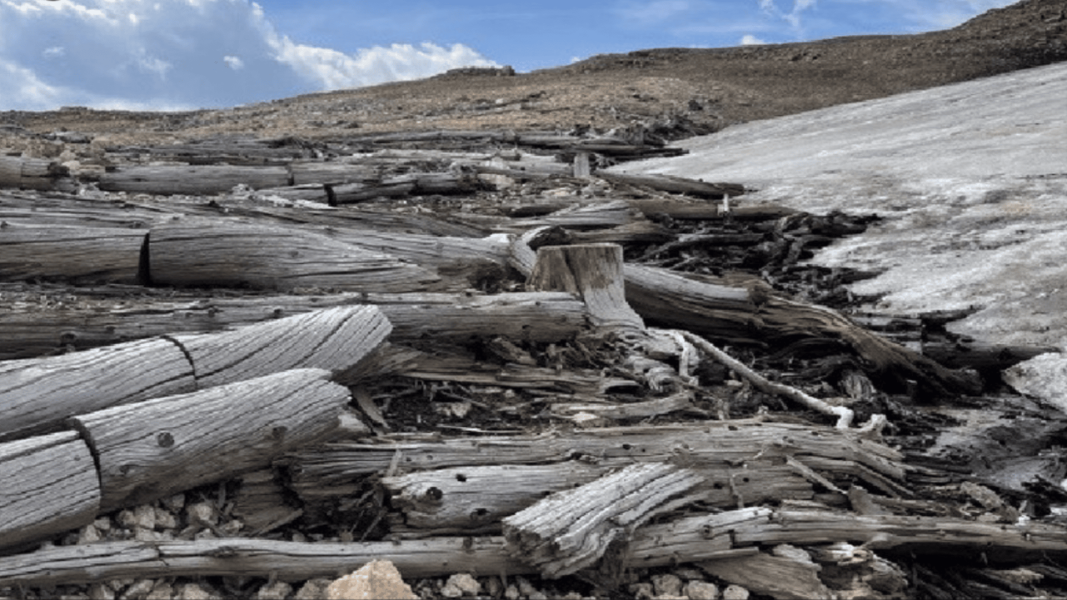Mars’ Greatest Mystery Solved: Scientists Uncover the Forces Behind Its Divided Terrain – The Daily Galaxy –Great Discoveries Channel

Mars’ hemispheres hold a geological mystery that has baffled scientists for decades: Why does the southern terrain rise dramatically above the smooth northern plains? Using seismic data from NASA’s InSight lander, researchers may have finally solved the riddle—and the answer could reshape our understanding of planetary evolution. What secrets lie beneath the Red Planet’s surface?Mars, the enigmatic Red Planet, has long puzzled scientists with a dramatic geological contrast between its hemispheres, known as the Martian dichotomy. The planet’s southern highlands tower five to six kilometers above the smooth, low-lying northern plains, presenting one of the most striking and perplexing features in the Solar System. Since its discovery in the 1970s, researchers have debated whether this dichotomy arose from external forces, such as a massive asteroid impact, or internal geological processes within Mars itself.Now, a groundbreaking study published in Geophysical Research Letters has shed light on this mystery. Using data from NASA’s InSight lander, scientists analyzed marsquakes to reveal that the answer lies deep within the planet’s interior. This finding not only advances our understanding of Mars’ geological history but also provides critical insights into planetary formation and tectonic processes.The Martian dichotomy refers to the stark differences between the two hemispheres of Mars. The southern highlands are ancient, cratered, and rugged, with frozen lava flows and rocks that retain traces of Mars’ once-global magnetic field. By contrast, the northern lowlands are smooth and relatively young, with minimal impact cratering and a flatter surface.The age difference between the two regions has intrigued scientists for decades. “The southern highlands appear to be much older, based on the density of craters,” said the researchers, noting that older surfaces accumulate more craters over time. These findings suggest that the southern terrain formed during Mars’ early history, while the northern plains were reshaped by subsequent geological activity.For years, scientists debated two leading theories to explain the dichotomy:The latest research strongly supports the endogenic hypothesis, showing that internal forces likely played a dominant role in sculpting Mars’ surface. By studying marsquakes, scientists found evidence of significant temperature differences beneath the two regions, consistent with mantle convection models.Marsquakes provided the breakthrough scientists needed to unravel the mystery. Unlike Earth, where hundreds of seismometers record earthquakes, Mars relies on a single instrument aboard the InSight lander. Despite this limitation, researchers pinpointed quake locations by analyzing differences in the arrival times of P waves and S waves—vibrations that travel through the planet.The data revealed clusters of marsquakes in the Terra Cimmeria region of the southern highlands. By comparing these events to quakes in the northern lowlands, researchers discovered that seismic waves lost energy more quickly in the south, indicating hotter rocks beneath the highlands. This temperature difference aligns with models of mantle convection, where heat rising beneath the highlands and sinking beneath the lowlands created the dichotomy.According to the study, the Martian dichotomy likely formed during the planet’s early history when its crust was thinner and more dynamic. Researchers suggest that Mars once had active tectonic plates, similar to Earth, which facilitated the movement of molten rock beneath the surface. Over time, these processes froze in place, forming a “stagnant lid” that preserved the dichotomy we see today.Key findings include:This discovery has far-reaching implications for our understanding of Mars and planetary evolution. The Martian dichotomy offers a glimpse into the planet’s early tectonic activity, providing clues about how Mars transitioned from a dynamic world to its current state. It also highlights the role of internal forces in shaping planetary surfaces, challenging assumptions that large impacts dominate planetary formation.Future research will focus on gathering more marsquake data and refining models of Mars’ interior. By comparing these findings with Earth and other planets, scientists hope to uncover universal principles governing planetary evolution.Got a reaction? Share your thoughts in the commentsEnjoyed this article? Subscribe to our free newsletter for engaging stories, exclusive content, and the latest news.Comment Save my name, email, and website in this browser for the next time I comment.
© 2024 | Daily Galaxy | All rights reserved
Source: https://dailygalaxy.com/2025/01/mars-greatest-mystery-solved-scientists/






